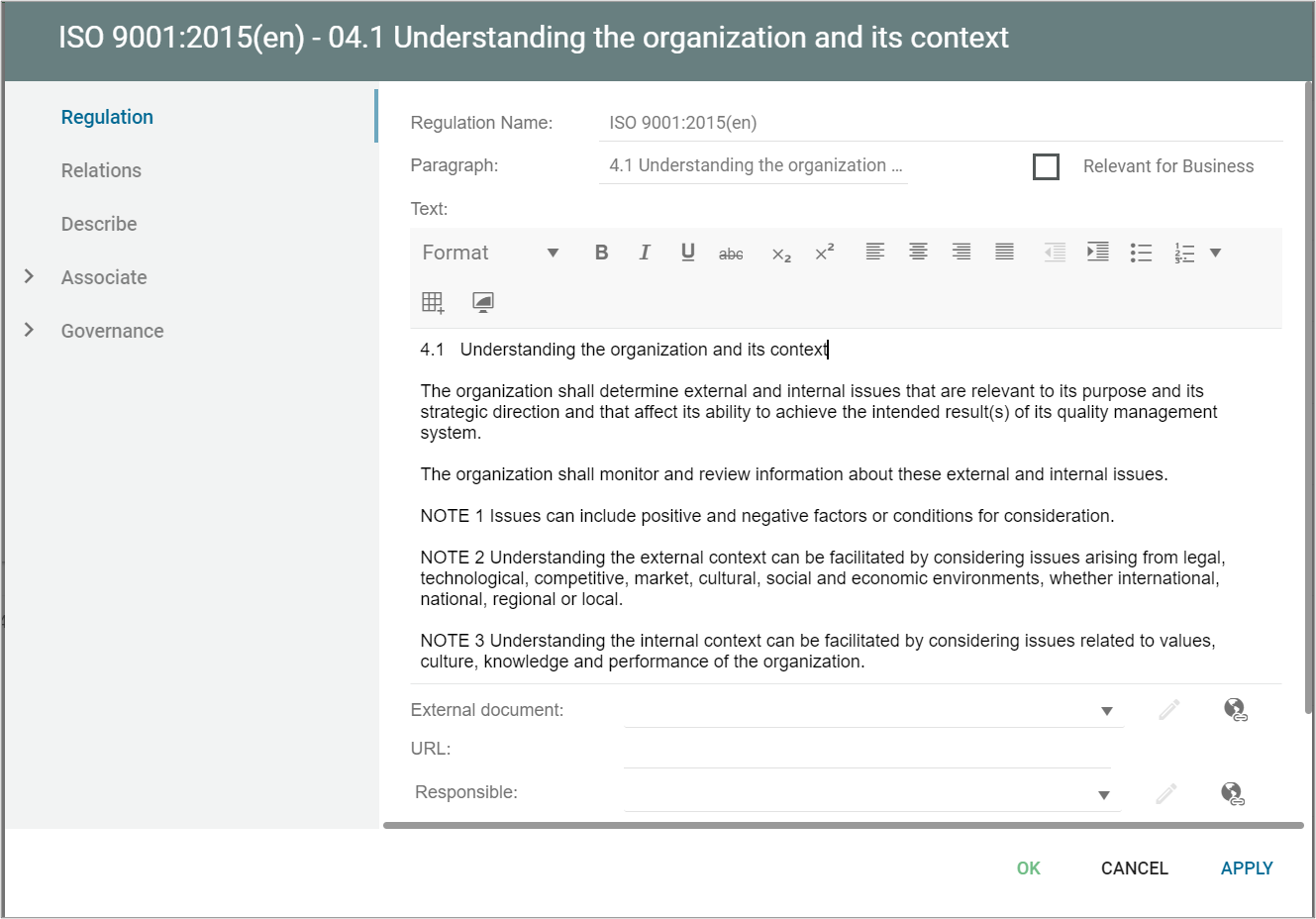A Problem represents a requirement from an interested party for a change in the way the business is running, the project is carried out, the content of a design component in the repository etc.
It is important to note that a problem should concidered a threat to the accomplishment of the business idea, the project or quality of the final product. As opposed to aChangeRequest that represents an opportunity to act.
It should always be clear to an organisation how to handle a Problem. The process of analyzing the scope of the problem, recommending an action and carrying out and action should be controlled by the project management or dedicated people.
Problem properties
The Problem tab
| Property | Metamodel name | Description |
| Short Description | ShortDescription | Short verbal description. |
| Priority | Priority | The priority for this Problem. Choices are: |
| Originated Date | OriginatedDate | CreationDate for this Problem. |
| Originated By | OriginatedBy | The person who put forward this Problem. Links to: InterestGroup, OrganizationUnit, Person, Position, Role. |
| Status | Status | The status of this Problem. Choices are: |
| Responsible | HasResponsible | Person responsible for the problem handling Links to: InterestGroup, OrganizationUnit, Person, Position, Role. |
The Recommend tab
| Property | Metamodel name | Description |
| Recommended Date | RecommendedDate | CreationDate of this recommendation. |
| Recommended By | RecommendedBy | The Person/Group responsible for this recommendation. Links to: InterestGroup, OrganizationUnit, Person, Position, Role. |
| Estimated Resource Requirement | EstimatedResourceRequirement | Estimated cost to solve the problem. |
| Recommended Solution | RecommendSolution | Description of the recommended solution |
The Actual tab
| Property | Metamodel name | Description |
| Start Date | StartDate | Starting date. |
| Executed By | ExecutedBy | The person/group that carries out the solution Links to: InterestGroup, OrganizationUnit, Person, Position, Role. |
| End Date | EndDate | Ending date. |
| Resources Spent | ResourcesSpend | Resources used |
| Corrective Action | CorrectiveAction | Description of the action |
The Breaks Down To tab
| Property | Metamodel name | Description |
| Breaks Down To | BreaksDownTo | Link to models showing a decomposed picture of this entity Links to: RequirementModel, StrategyModel. |

